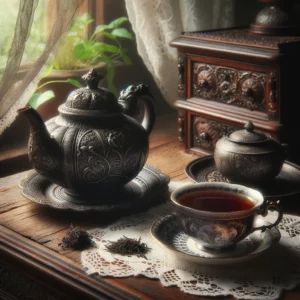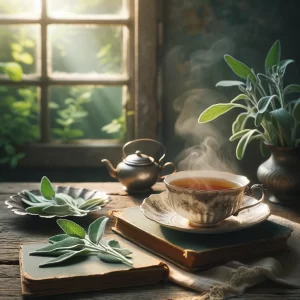Sencha Green Tea, a cornerstone of tea culture in Japan and beloved by tea enthusiasts around the world, is celebrated for its delicate balance of sweetness and bitterness. This refreshing beverage not only captivates with its flavor but also tells a story of tradition, craftsmanship, and the serene beauty of tea-drinking rituals. Our exploration of Sencha will uncover the history, artistry, and ways to savor this exquisite tea, making it an inviting read for both seasoned aficionados and curious newcomers alike.
Table of Contents
- Introduction to Sencha Green Tea
- The Origins and History of Sencha Green Tea
- What Makes Sencha Green Tea Special?
- Brewing the Perfect Cup of Sencha
- Creative Ways to Enjoy Sencha Green Tea
- Pairing Sencha Green Tea with Food
- Finding and Storing Sencha Green Tea
- The Journey from Leaf to Cup: Cultivation and Processing
- Conclusion: The Timeless Appeal of Sencha Green Tea
- Try Sencha Green Tea
Introduction to Sencha Green Tea
Sencha Green Tea, a gem in the world of teas, stands out for its refreshing and invigorating qualities. Known for its bright green color and a perfect blend of sweetness and bitterness, Sencha is a daily staple in Japan and a favorite among tea lovers globally. Its popularity is not just about taste; making it a fascinating subject for anyone looking to dive into the culture of tea drinking.
The Origins and History of Sencha Green Tea
The Birthplace of Sencha: Sencha Green Tea proudly calls Japan its home. It’s believed that Sencha’s history began in the 17th century when innovative tea growers started steaming tea leaves to prevent oxidation, a method that preserved the green color and fresh flavor of the tea. This process distinguished Sencha from other teas and marked the beginning of its journey to popularity.
A Historical Perspective: Over the centuries, Sencha has woven itself into the fabric of Japanese culture. Initially a luxury for the elite, its appeal gradually spread, making it a beloved beverage across all segments of society. Today, Sencha is not just a tea; it’s a symbol of hospitality, relaxation, and the art of living.
What Makes Sencha Green Tea Special?
Unique Characteristics: Sencha’s allure lies in its distinct flavor profile – a harmonious blend of sweetness, bitterness, and a grassy freshness that awakens the senses. Unlike other green teas, Sencha leaves are rolled into needle-like shapes after steaming, which helps in releasing their flavor during brewing.
Varieties and Flavors: Sencha comes in various grades, from the light and refreshing first flush (Shincha) to the more robust and fuller flavors of the later harvests. Each variety offers a unique tasting experience, influenced by the region of cultivation, harvest time, and processing methods.
Brewing the Perfect Cup of Sencha
Step-by-Step Guide:
- Water Temperature: Start with water heated to about 70-80°C (158-176°F). Too hot water can make the tea bitter.
- Tea Quantity: Use about 1 teaspoon (2-3 grams) of Sencha leaves for every cup (240 ml) of water.
- Steeping Time: Let the tea steep for 1-2 minutes. Adjust the time depending on your taste preference for strength.
Tips for Best Results:
- Always use fresh, soft water for brewing.
- Pre-warm your teapot and cups to maintain the temperature of the tea.
- Experiment with brewing times and temperatures to find your perfect cup.
Creative Ways to Enjoy Sencha Green Tea
Beyond the Tea Cup: Sencha’s versatility extends beyond traditional brewing. It can be enjoyed cold-brewed, offering a milder taste perfect for hot days, or used in various culinary creations, from Sencha-infused desserts to savory dishes, adding a touch of sophistication and flavor.
Cultural Practices: In Japan, Sencha is more than just a drink; it’s part of daily life and special ceremonies, reflecting the culture’s appreciation for the art of tea. Sharing a cup of Sencha is a gesture of hospitality and friendship, celebrated in both casual meetings and formal tea gatherings.
Pairing Sencha Green Tea with Food
Enhancing the Experience: The delicate flavor of Sencha makes it an excellent companion to food. It pairs wonderfully with traditional Japanese sweets (Wagashi), fresh seafood, and even light pastries, enhancing the flavors and offering a balanced taste experience.
- Suggested Pairings:
- Sweet: Wagashi, mochi, or fruit-based desserts.
- Savory: Sushi, sashimi, or simple rice dishes.
Finding and Storing Sencha Green Tea
Selecting Quality Sencha: Look for vibrant green leaves with a fresh, grassy aroma. High-quality Sencha is often found in specialty tea shops or online stores dedicated to Japanese teas. Always check the harvest date and origin for freshness and authenticity.
Storage Tips:
- Keep Sencha in an airtight container away from light, moisture, and strong odors.
- Store in a cool, dark place to preserve its flavor and color.
The Journey from Leaf to Cup: Cultivation and Processing
From Fields to Flavor: Sencha’s journey begins in the lush tea fields of Japan, where the climate and soil contribute to its unique taste. The leaves are carefully harvested, steamed, rolled, and dried – a meticulous process that ensures the highest quality and preserves the tea’s natural properties.
Craftsmanship and Quality: The art of making Sencha is a blend of tradition and precision, where each step, from cultivation to processing, plays a crucial role in creating the tea’s signature flavor profile. This dedication to quality is what makes Sencha a truly exceptional tea.
Conclusion: The Timeless Appeal of Sencha Green Tea
Sencha Green Tea offers a delightful journey through taste, culture, and tradition. Its rich history, unique brewing techniques, and versatile flavors make it a fascinating subject for anyone looking to deepen their appreciation for tea. Whether you’re a seasoned tea drinker or new to the world of Sencha, there’s always something new to discover and enjoy. So, take a moment to brew a cup, savor the flavor, and celebrate the timeless appeal of Sencha Green Tea..
Try Sencha Green Tea
“As an Amazon Associate I earn from qualifying purchases.”
[azonpress template=”grid” asin=”B000SAPX8G,B07T9GB531,B08VYSDYQ1,B001714V1U”]



